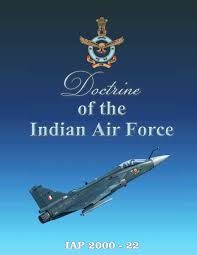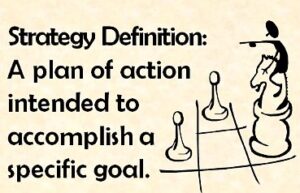
News:
China is employing the strategy of salami-slicing in the South China Sea, and it limits the options of the peripheral countries by baffling their plans, making it problematic for them to develop a response.
Views:
- Salami slicing, rather than overt aggression, is China’s preferred strategy in a well-planned and methodical manner to gain strategic advantage through a steady progression of small actions.
- The term ‘salami slicing’ was coined by Nobel laureate Thomas Schelling.
- It describes a strategy in the military that oversteps boundaries and offers an attractive option for expansionist powers.
- The basic notion is to gain ground slice by slice rather than all at once. These slices over a period of time lead cumulatively to a strategic transformation in China’s favour.
News:
There has been an incremental expansion of China’s footprint and control in the South China Sea.
Views:
- China has been following the “cabbage strategy”, to take over control over contested islands.
- This strategy entailed surrounding a contested island with concentric layers of Chinese fishing boats, fishing administration ships, maritime enforcement ships, and warships such that the island is wrapped layer by layer like a cabbage.
News:
On March 10, 2023, the 14th National People’s Congress (NPC) unanimously elected ‘Xi Jinping’ as the President of the People’s Republic of China (PRC) and the Chairman of the Central Military Commission (CMC) for an unprecedented third term. President Xi appointed ‘Li Qiang’ as China’s new Premier.
Views:
- The development is as expected.
- Will Xi be more aggressive or cool down temporarily?
- My take is that temporary cooling down would be followed by aggressive behaviour towards the end of the third term i.e. 2027-28.
News:
President Xi, in his address to the NPC, stressed upon coordinating development and security for building China into a great modern socialist country in all respects. Xi also called for adhering to the one-China principle by resolutely opposing Taiwan’s independence separatist forces.
Views:
- The focus continues to be the pursuit of achieving number one status in the world.
- Expansionist “One China policy” continues to be followed.
- Taiwan is the next agenda.
- Frequency and intensity of “military muscle flexing and strategic coercion exercises” is increasing.
- When and how will China achieve it?
- After Taiwan what next?
News:
President Xi proposed “Global Civilization Initiative” calling for respecting the diversity of civilizations, advocating common values of humanity, valuing civilizational inheritance and innovations, and jointly advocating robust international people-to-people exchanges.
Views:
- Announcing China’s big role in world affairs.
- Big words (respect, common values, humanity, values, and jointly, etc) which China doesn’t care about.
News:
On March 5, 2023, Li Keqiang delivered a “Report on The Work of the Government” to the NPC. China targeted GDP growth of around 5 percent for 2023, and announced a defence budget of CNY 1.55 trillion (USD 224.79 billion) for 2023, an increase of 7.2 percent over 2022.
Views:
- China’s figures have to be taken with a pinch of salt.
- Will decoupling slow down China’s growth?
- Military spending is much more than projected.
- Military modernisation is progressing according to timelines.
News:
On March 7, 2023, in his first major foreign policy statement, Foreign Minister Qin Gang highlighted China’s firm opposition to hegemonism and power politics including the US Indo-Pacific Strategy seeking to create an Asia-Pacific version of NATO.
Views:
- Two axes are emerging.
- Cold War 2.0 coming up.
- China is crying wolf about QUAD calling it an Asian NATO.
News:
President Xi Jinping visited Moscow from March 20-22, 2023. In a joint statement, the two sides stressed “deepening the comprehensive strategic partnership between the two countries for a new era”.
Views:
- China-Russia relations are a marriage of convenience.
- China is happy to be the stronger partner in the relationship with Russia.
News:
H.H. The Dalai Lama has named a US-born Mongolian boy the ‘10th Khalkha Jetsun Dhampa Rinpoche’ – the third highest rank in Tibetan Buddhism, reigniting the larger question of the 14th Dalai Lama’s own reincarnation. China maintains that it will only recognise Buddhist leaders of its own choosing.
Views
- The entire world is waiting for how things will pan out post-Dalai lama.
- Tibetan activities would continue from exile.
- China is carrying out the systemic demographic change in Tibet.
News:
Six years after the Doklam standoff, Bhutanese Prime Minister Lotay Tshering’s statement that Beijing has an equal say in finding a resolution to the dispute is troubling for New Delhi. India is opposed to China extending its footprint in Doklam as the plateau lies close to the sensitive Siliguri corridor.
Views:
- China has resolved border issues with all except India and Bhutan.
- It is offering Bhutan a comprehensive package to resolve issues.
- The package gives them a back door entry into Bhutan.
- The older generation in Bhutan is very sceptical about China’s intentions, however, the younger generation is willing to experiment, ignoring the plight of other countries that have engaged with China.
Your opinion matters
Please share your views and opinion about the following questions:
- Will Xi be more aggressive or cool down temporarily?
- When and how will China take control of Taiwan?
- After Taiwan what next?
- Will decoupling slow down China’s growth?
- Future of Tibet post Dalai Lama?
For regular updates, please register here
Subscribe
References and credits
To all the online sites and channels.
Disclaimer:
Information and data included in the blog are for educational & non-commercial purposes only and have been carefully adapted, excerpted, or edited from sources deemed reliable and accurate. All copyrighted material belongs to respective owners and is provided only for purposes of wider dissemination.




